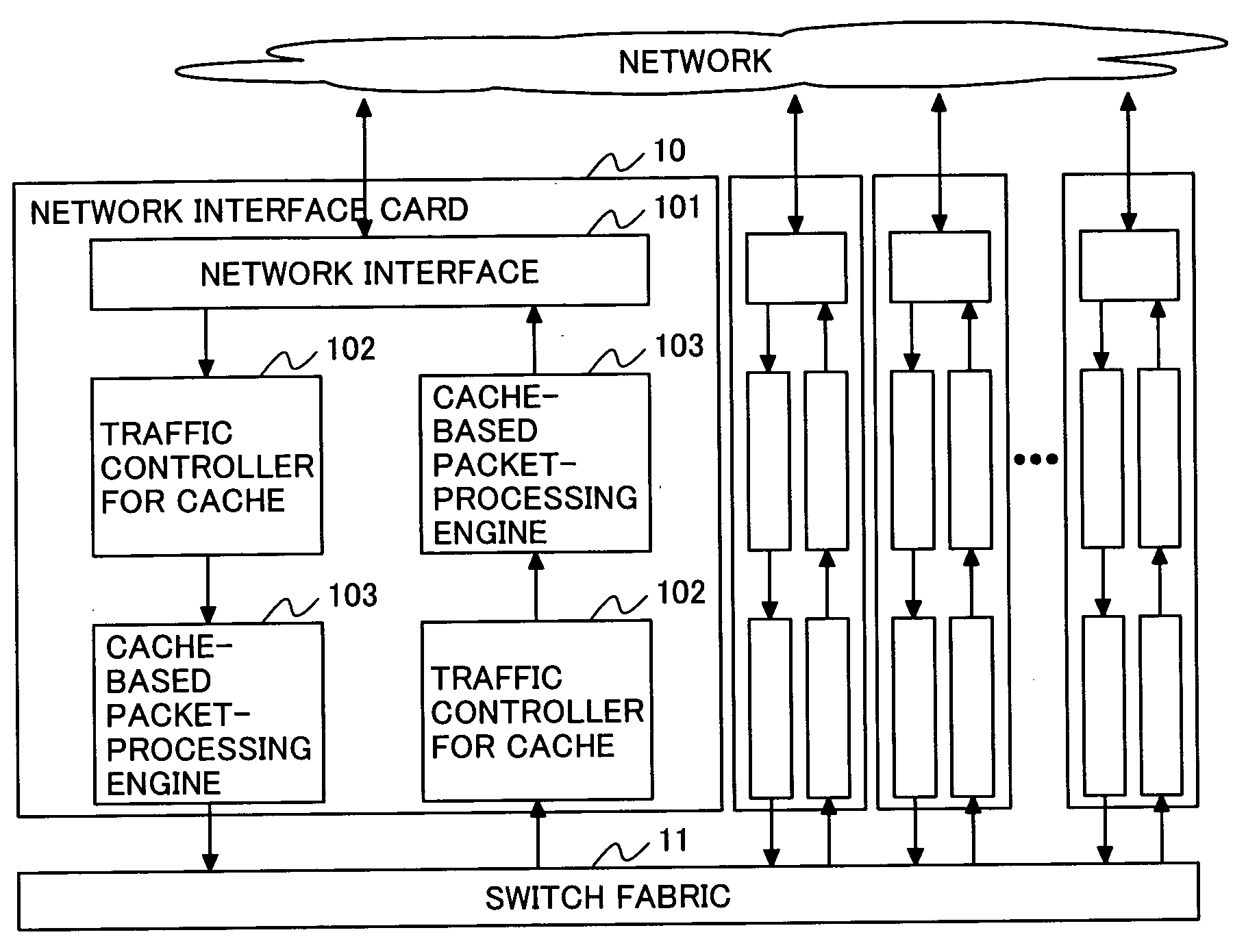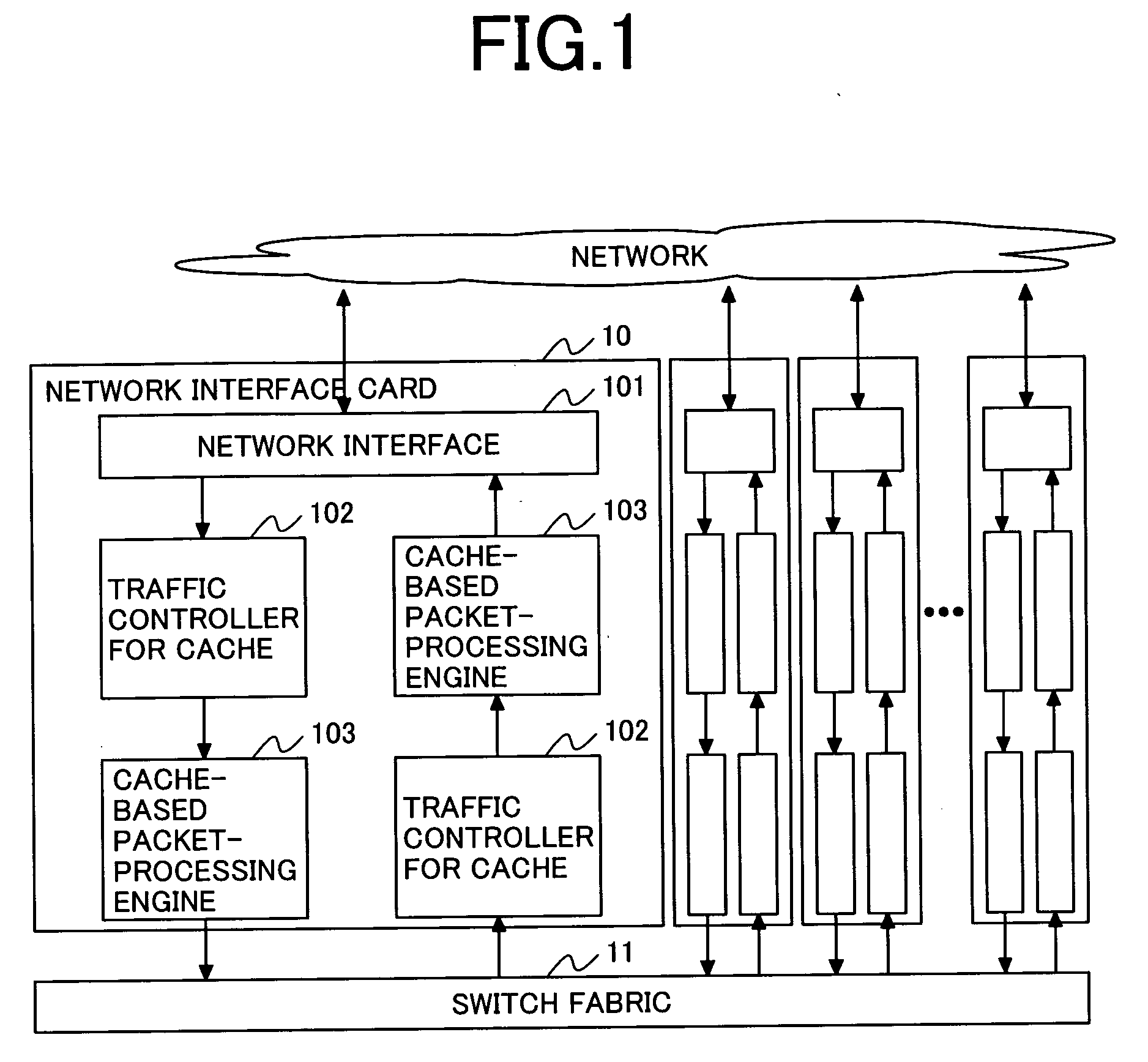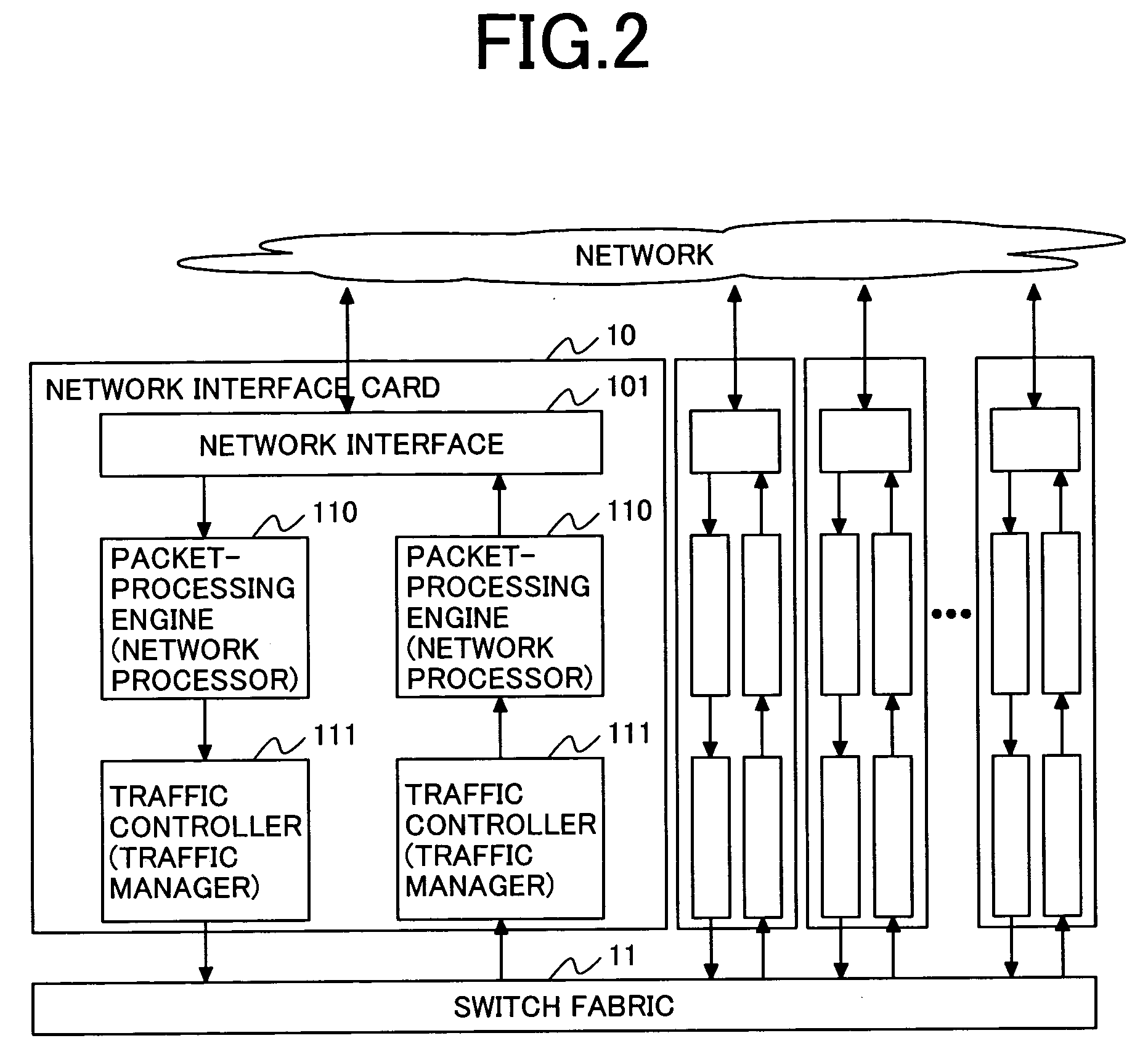Traffic control method for network equipment
a traffic control and network equipment technology, applied in data switching networks, memory adressing/allocation/relocation, digital transmission, etc., can solve the problems of increased power consumption, excessive network processor size, and drop in so as to reduce power consumption and avoid the effect of dropping throughput in network equipmen
- Summary
- Abstract
- Description
- Claims
- Application Information
AI Technical Summary
Benefits of technology
Problems solved by technology
Method used
Image
Examples
first embodiment
[0045]FIG. 1 is a block diagram of network equipment in accordance with the present embodiment.
[0046] In this embodiment, the network equipment is comprised of a network interface 101 for sending and receiving packets from the network, a traffic controller 102 for the cache for controlling the network traffic, a cache-based packet processor 103, a network interface card 10 containing the elements 101, 102, 103, and a switch fabric 11 for coupling multiple network interface cards 10 and for exchanging packets. Also included are interfaces between host processors and host processors for centralized control of path information between the multiple network interface cards 10.
[0047] An overall description of the packet processing operation and its effect in this embodiment will be described next. The packet processor (or packet processing engine) receives the packets from the network interface 101, and the cache traffic controller 102 separates the packets into groups called flows, and...
second embodiment
[0101] When utilizing the cache, multiple data of different types tends to concentrate at the same entries to the cache memory, and this causes a state called thrashing to occur where data will mutually overwrite each other, thereby destroying the cache entries. Consequently, frequently interchanging the cache entries will cause a drop in cache utilization efficiency. The (N-way) Set Associative method process cache and its FIFO queues for the traffic manager, as described in conjunction with the first embodiment, are contrived to reduce thrashing, but they might be inadequate to inhibit thrashing in small N values that are mountable in designated entries.
[0102] Therefore, in order to prevent a drop in performance due to thrashing, the cache traffic controller of the second embodiment of this invention contains a small volume fully associative process cache and FIFO queues and tags for the small volume fully associative process cache.
[0103] The fully associative process cache is a...
third embodiment
[0110] The first embodiment and the second embodiment implement the mounting efficiency and are based on examples in which the process-cache memory tag is separate from the cache-based packet processor, and it is installed in the traffic controller for cache. The cache-based packet processor 103 may be a type that completely contains both the tags and the data section of the process-cache memory. As seen in FIG. 13, the third embodiment is a structure where the process-cache memory of the cache-based packet processor 103 possesses a tag (section) as well as a data section. The cache traffic controller 102 in the third embodiment possesses a structure identical to that of the first embodiment or second embodiment; however, when the output data generator 204 conveys information to the cache-based packet processor 103, the unique information 401, the analyzed information 402 and the extracted information 403 are removed from the format 450 of FIG. 4.
[0111] The cache-based packet proce...
PUM
 Login to View More
Login to View More Abstract
Description
Claims
Application Information
 Login to View More
Login to View More - R&D
- Intellectual Property
- Life Sciences
- Materials
- Tech Scout
- Unparalleled Data Quality
- Higher Quality Content
- 60% Fewer Hallucinations
Browse by: Latest US Patents, China's latest patents, Technical Efficacy Thesaurus, Application Domain, Technology Topic, Popular Technical Reports.
© 2025 PatSnap. All rights reserved.Legal|Privacy policy|Modern Slavery Act Transparency Statement|Sitemap|About US| Contact US: help@patsnap.com



